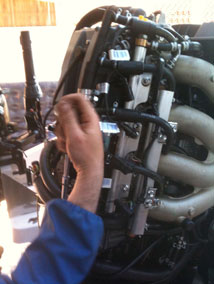|
Why choose Power Sea Saver?
The installation of a LPG system in a marine environment requires addressing several issues that differ from those encountered in the automotive sector. In particular, waters with a high salt content require the use of materials that are extraneous to the automotive sector.
Galvanic corrosions generated by stray currents cause lacerations that may compromise the integrity of the system.
Engine vibration, the pressure reducer in contact with the engine (as is the case with outboard engines), electronic parts (trigger box) and electrical parts (fuses and connections) exposed to corrosion, and so on. Power Sea Saver is able to preserve the integrity of engine components over time as it is designed and tested to resist inconveniences such as those listed above. As to fuelling, marine and car engines differ from one another in that the LPG flow in a boat engine occurs at a fairly significant and continuous rate. For example, a boat weighing 8/9 quintals on average, mounted with an 140 HP outboard engine running at a speed of 22 knots (40 km/h) consumes about 0.3-0.5 litres of fuel per minute, whereas, a boat weighing 10-12 quintals mounted with a 250 HP outboard engine consumes about 0.4-0.7 litres of fuel per minute. Therefore, a few adaptations are required to ensure continuous vaporization in an engine with an open loop cooling system. This is possible with Power Sea Saver, thanks to its flexibility and its special features that allow to regulate the system depending on the power required.
|


